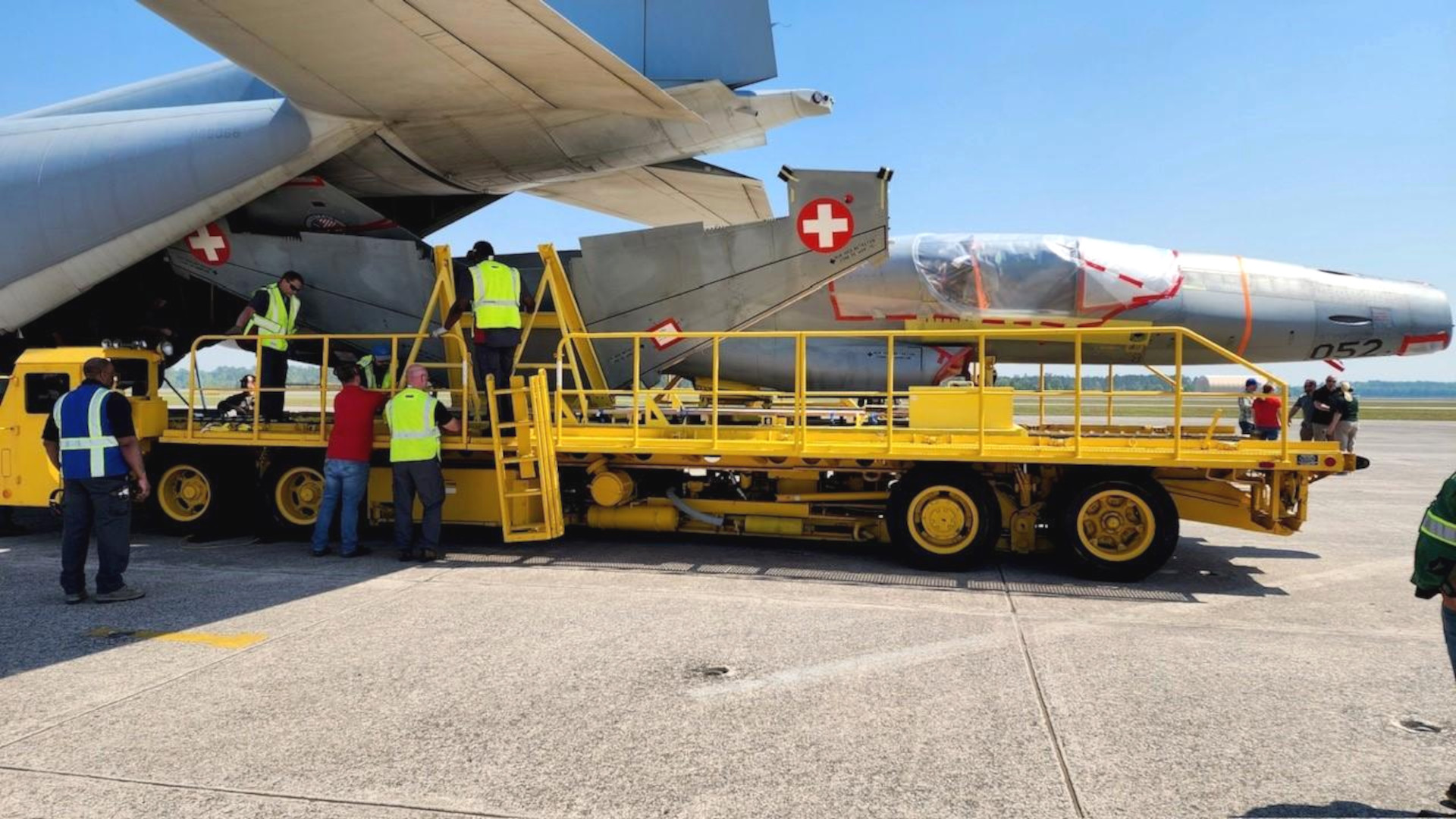The first of a batch of 22 ex-Swiss Air Force F-5E/F Tiger IIs being converted into aggressor jets for the U.S. Navy and Marine Corps is now in the United States. These aircraft, which will receive a host of upgrades as part of the conversion process, will help bolster the two services’ existing fleets of F-5N/F aggressors. These jets offer a cost-effective and proven means to replicate a range of different threat types for training purposes.
The Navy has now released pictures of the aircraft in question, a former Swiss Air Force single-seat F-5E, arriving in a disassembled form at Cecil Field in Jacksonville, Florida, back on March 21. A U.S. Marine Corps KC-130J Hercules aircraft brought the jet to Cecil Field.
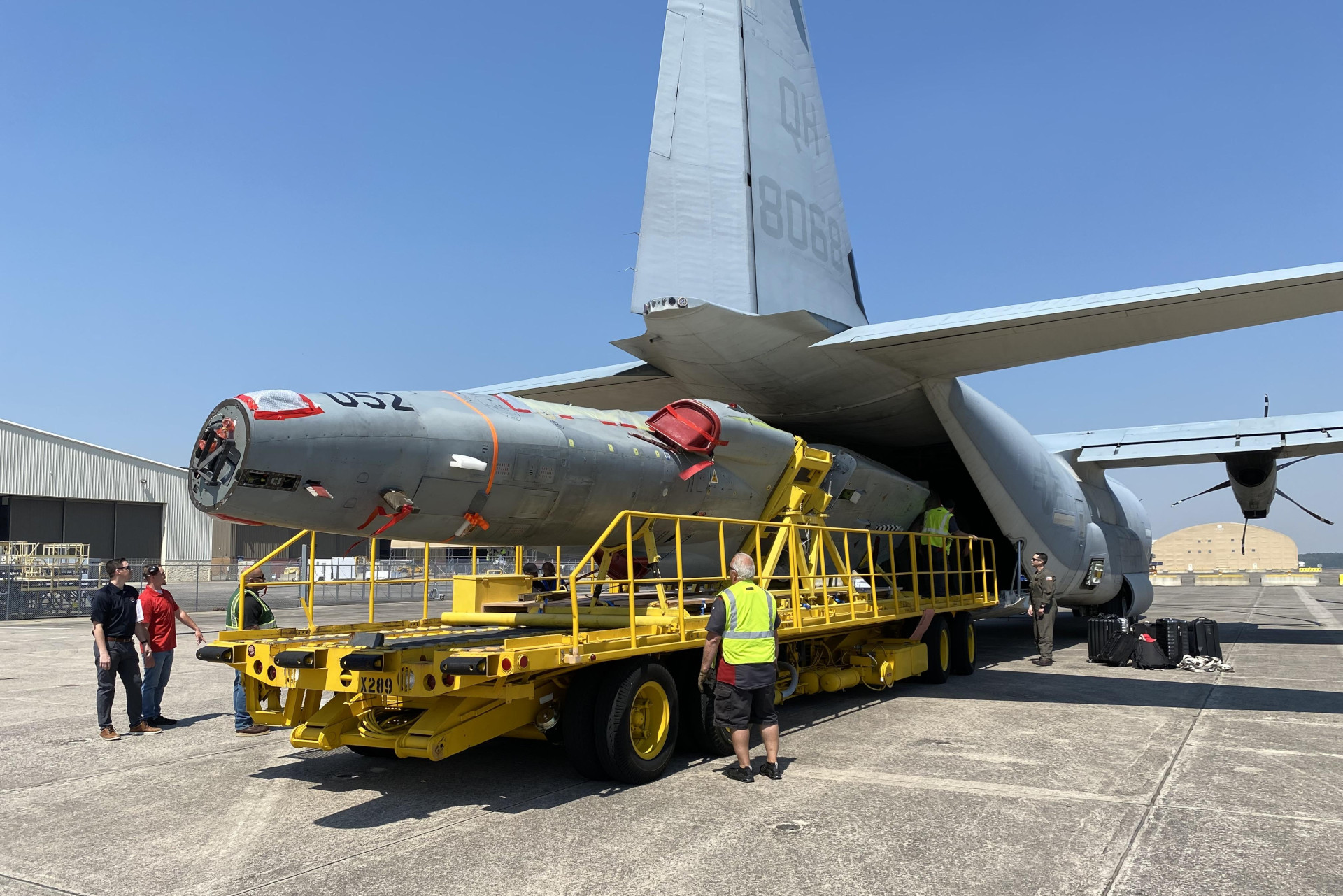
On March 17, Swiss authorities announced that the Marine KC-130J had picked up the F-5E at Emmen Air Base in the central part of the country. Switzerland is separately in the process of retiring its entire Tiger II fleet, which will be supplanted by new F-35A Joint Strike Fighters. The F-35As will also replace the country’s newer, but still aging F/A-18C/D Hornets.
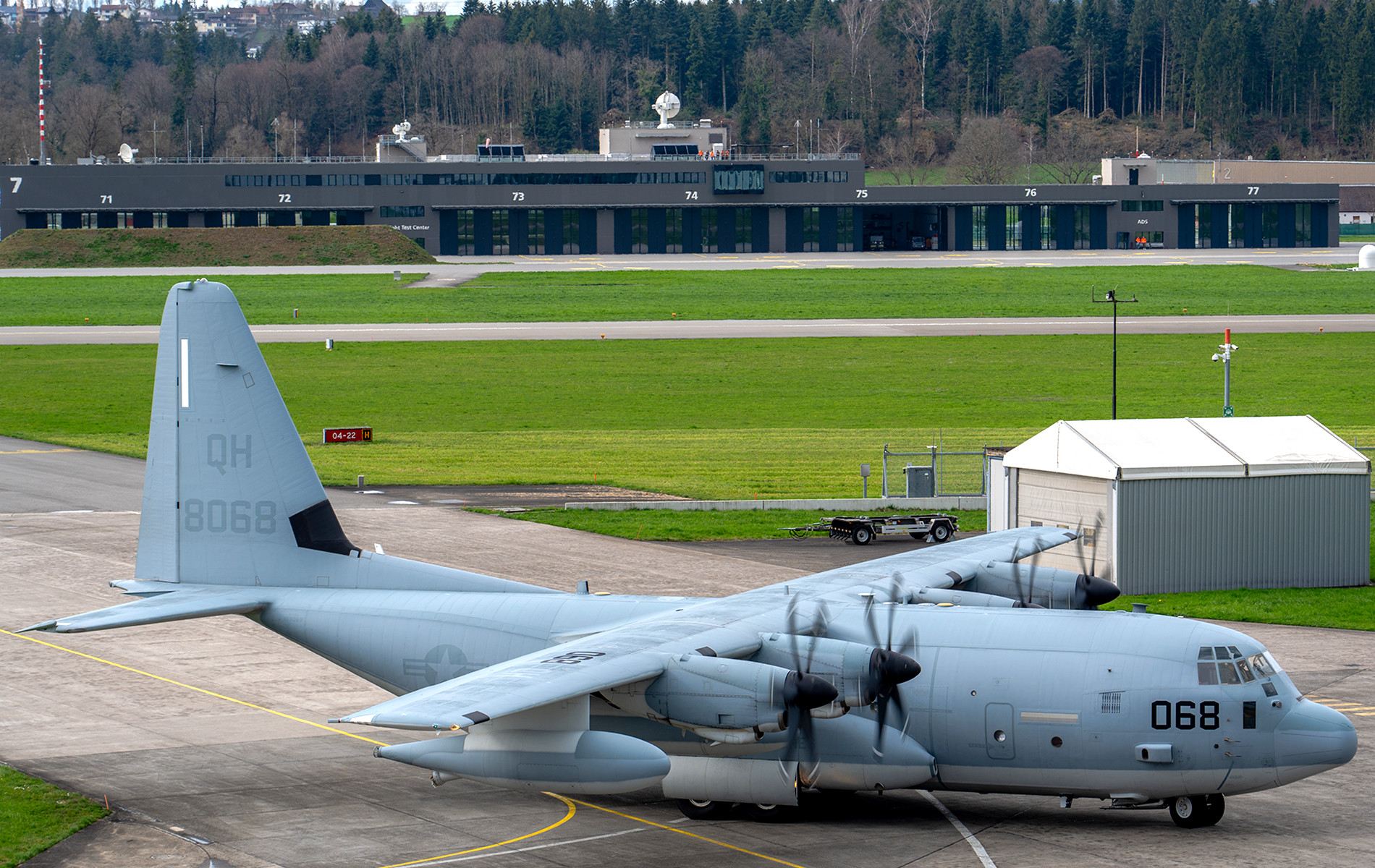
The arrival of the former Swiss F-5E at Cecil Field marks the start of the second phase of work on the 22 ex-Swiss Tiger IIs to convert them into Navy and Marine aggressors under what is formally known as the Avionics Reconfiguration and Tactical/Modernization for Inventory Standardization program, or ARTEMIS. We will come back to this in a moment.
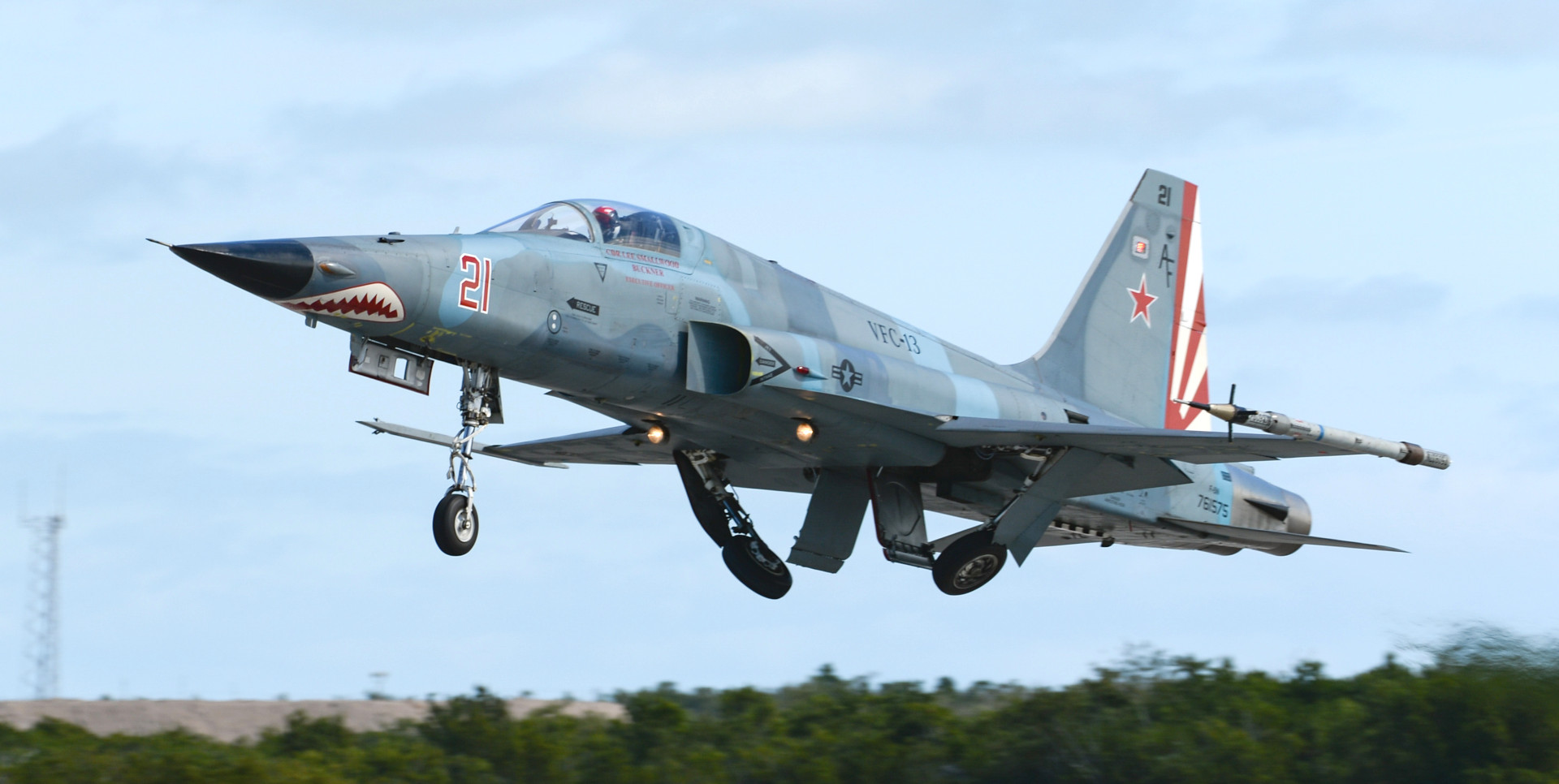
The Navy already operates 28 single-seat F-5Ns and a pair of two-seat F-5Fs as aggressors. These are split between two squadrons, Fighter Squadron Composite 111 (VFC-111) VFC-111 at Naval Air Station Key West in Florida and VFC-204 at Naval Air Station Joint Reserve Base New Orleans in Louisiana. VFC-13 at Naval Air Station Fallon in Nevada previously flew F-5N/Fs, but has since converted to F-16s. The Marines have another 11 F-5Ns and one F-5F in their inventory, which have long been assigned to Marine Fighter Training Squadron 401 (VMFT-401) at Marine Corps Air Station Yuma in Arizona. All 42 of these jets also came to the Navy and Marines from Swiss Air Force stocks.

The Navy first announced its intention to buy the additional 22 former Swiss jets – 16 single-seat F-5Es and 6 F-5Fs – in 2019. Half of those will go to the Marines. The Corps’ stated plan in the past was to establish a second F-5 squadron, VMFT-402, at Marine Corps Air Station Beaufort in South Carolina in 2023 to fly these incoming jets and said that it would receive an initial tranche of three F-5Ns from an unclear source, likely from the Navy. VMFT-402 looks to have been at least technically stood up last year as planned, but it is not clear what aircraft, if any, might be assigned to the unit at present. The first of the fully converted ex-Swiss Tiger IIs is not expected to be delivered until sometime next year. The last one is currently scheduled to arrive at its new Navy or Marine Corps home in 2028.
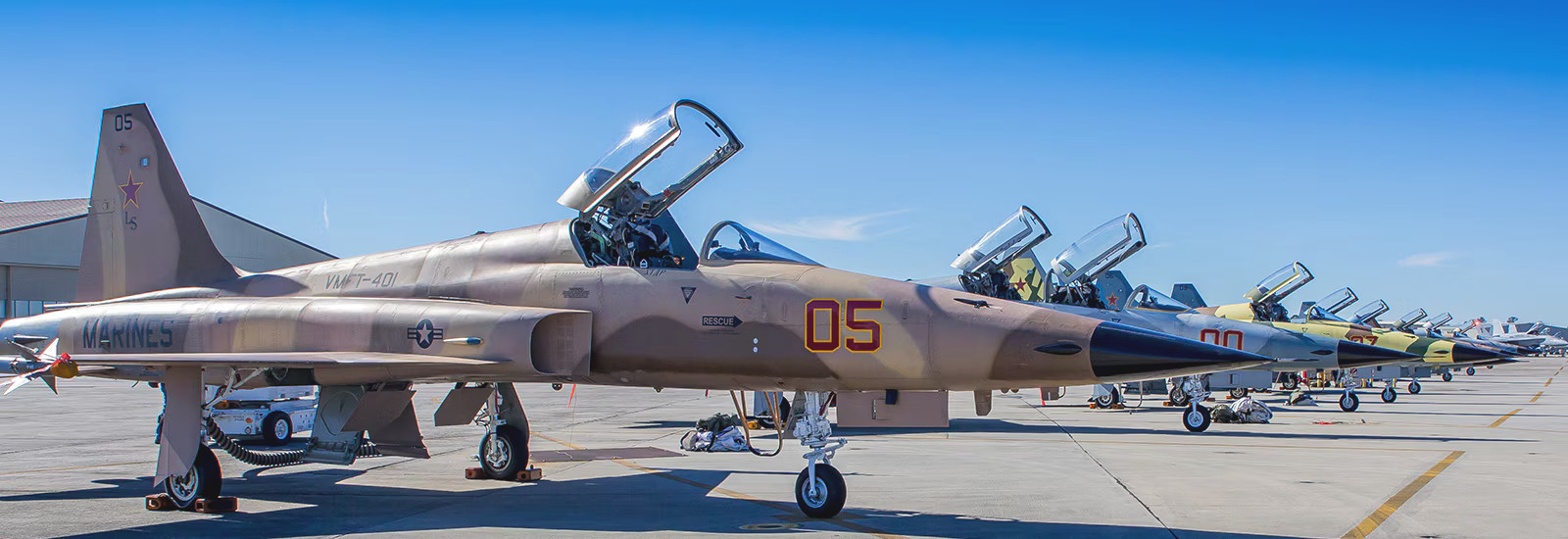
Whatever the case, ARTEMIS has already been a years-long effort. Phase one of the program, which started in 2020, has involved Swiss defense contractor RUAG conducting “aircraft inspection[s], maintenance, structural component replacement, and engine modification and overhaul[s]” on all of the jets, according to Naval Air Systems Command (NAVAIR). RUAG was hired to do this work as a subcontractor to private U.S. ‘red air’ adversary support company Tactical Air Support, Inc., or TacAir, which is the lead contractor for ARTEMIS. The work done by RUAG essentially brings the jets up to the Navy and Marine Corps’ existing F-5N/F aggressor standard.
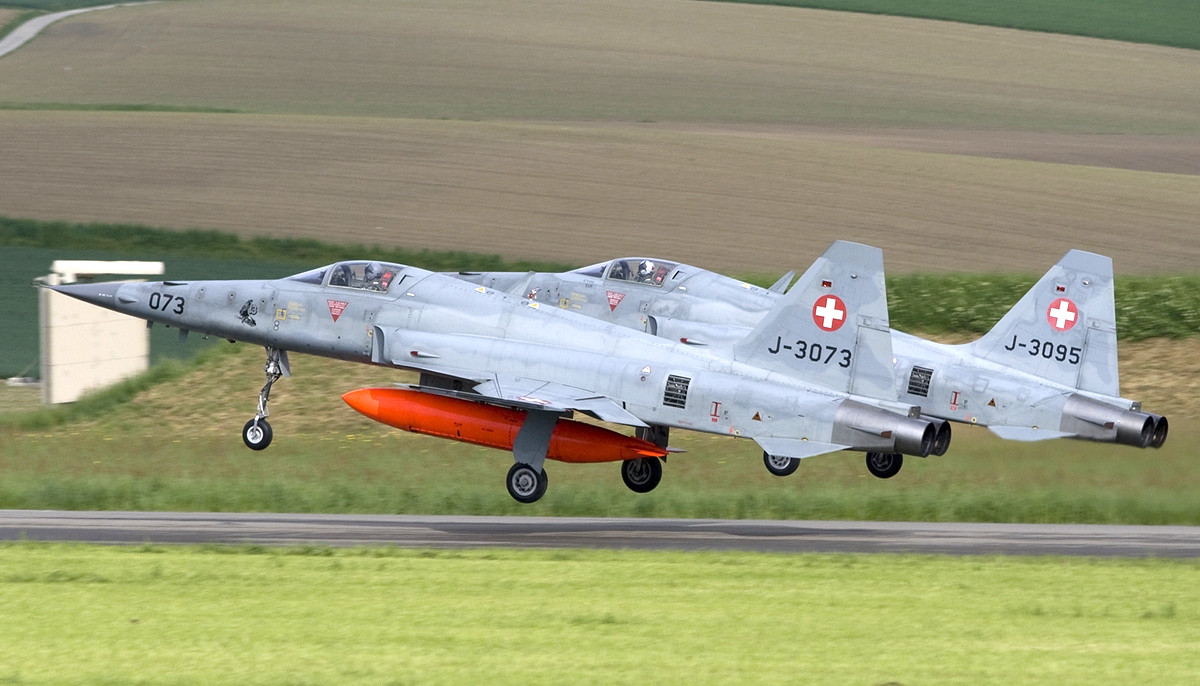
TacAir is conducting ARTEMIS’ phase two directly at its facility at Cecil Field and involves additional “aircraft inspections, maintenance, and repair,” as well as the integration of “a new glass cockpit, modern avionics, and other safety modifications,” according to NAVAIR. The upgrade includes new Mk 16 ejection seats, Digital Air Data Computers (DADC), and Automatic Dependent Surveillance-Broadcast (ADS-B) transponders, as well as the new ‘glass’ cockpit with their large digital multi-function displays, according to Navy budget documents.
The full ARTEMIS upgrade package is based on the F-5 Advanced Tiger, or F-5AT, configuration developed by TacAir. The F-5AT features “Duotech’s purpose builtNememsis radar, mission computer, threat weapons engagement zone (WEZ) replication software suite, purpose built Duotech’s Argus Radar Warning Receiver (RWR) gear, Mason modern hands on throttle and stick (HOTAS), Color multi-function display (MFD), [and a] Garmin moving map display,” according to the company’s website.
TacAir pilots flying F-5ATs also benefit from Scorpion helmet-mounted displays, as you can read more about here.
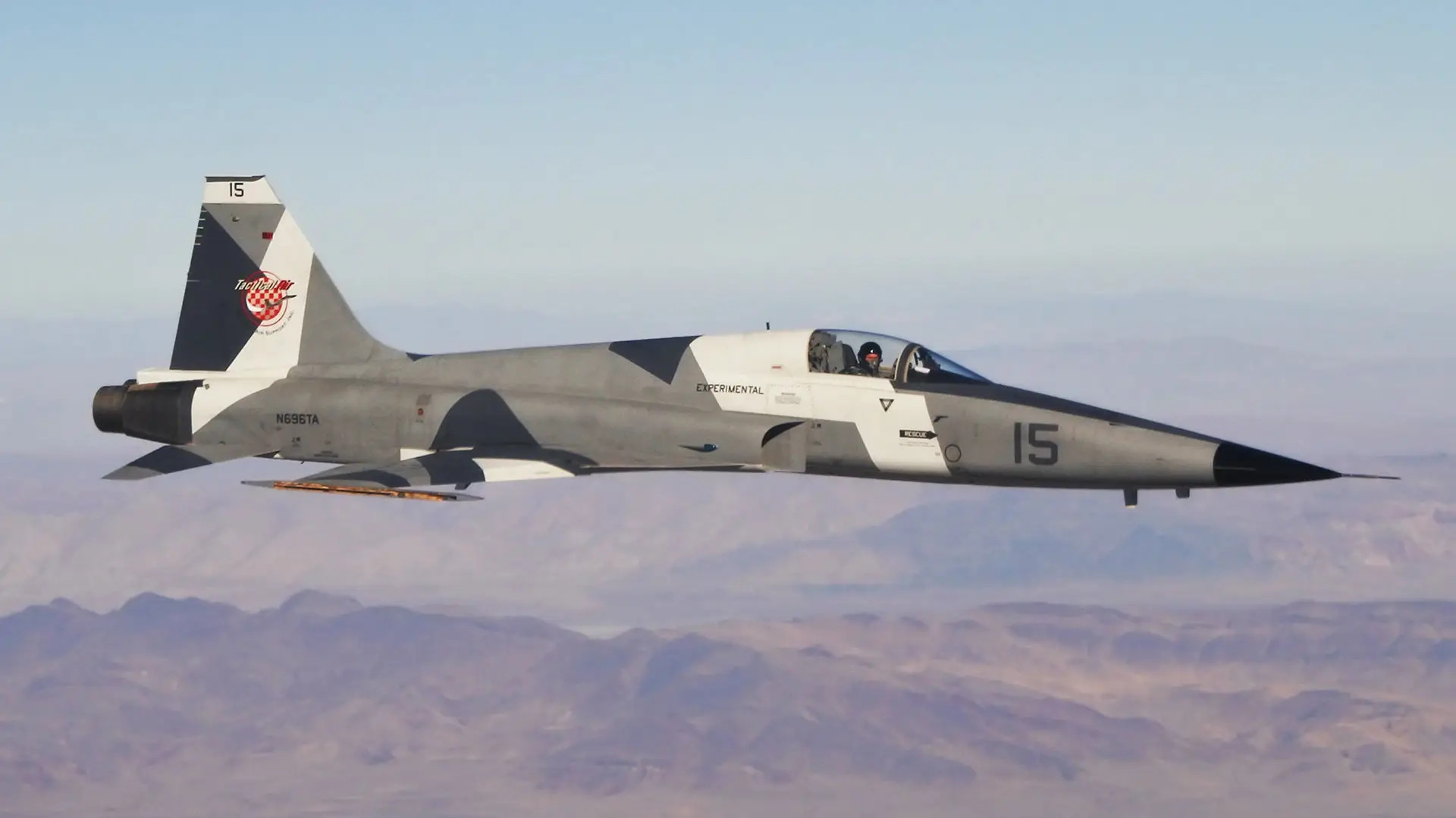
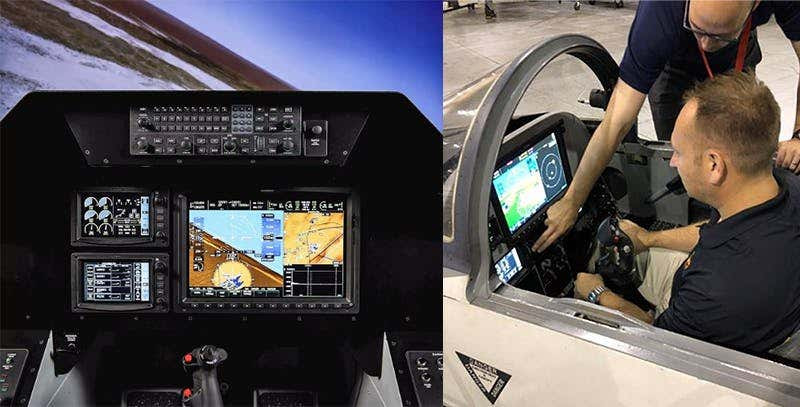
This is all in line with details about future F-5 aggressor plans from the Marine Corps’ 2022 aviation plan. Other existing Navy and Marine F-5N/Fs are being brought up to the ARTEMIS standard, as well. The resulting aircraft are known as F-5N+/F-5F+s.
“[The] F-5 [fleet] is currently undergoing an upgrade to glass cockpits… Further advancements in Red Net and the integration of TCTS II [Tactical Combat Training System Increment II] will allow synthetic adversary injects to decrease the forecasted gap in adversary training,” according to the 2022 Marine Corps Aviation Plan. “Upgrading EA [electronic attack] capabilities and incorporation of an IRST in the future is also a priority within the adversary community and Program Office.”

The additional ex-Swiss F-5s will be a boon to Navy and Marine aggressor forces. In general, there has been a surge in demand for adversary support within those services, as well as the U.S. Air Force, in recent years. Part of this growth has been due to a desire for advanced “red air” capabilities. The U.S. military also just sees a need for a greater volume of mock threats to better represent higher-end large-scale conflict scenarios during exercises, particularly as part of preparations for a potential major fight in the Pacific against China. This is all on top of more routine training demands.
“Adversary capacity is the greatest issue in Marine Corps air-to-air training, followed closely by range availability and modernization, and training simulator capabilities. VMFT-401 can source up to 3,300 sorties per year, restrained by aircraft utilization and [the] numbers of F-5s assigned,” the Marine Corps’ 2022 Aviation Plan explained. “Combining A/A [air-to-air] requirements for fleet training, FRS [Fleet Replacement Squadron] production, and weapon school support, the USMC builds an adversary requirement of nearly 15,000 sorties in 2022. Accordingly, the USMC suffers over an 11,000 sortie capacity gap.”
That’s just the Marine Corps.

In recent years, the Navy, Marines, and Air Force have turned to contractors like TacAir to help meet some of their additional red air needs. There has also been interest in expanding organic aggressor capacity, especially to help replicate stealthy fifth-generation threats. Dedicated aggressor pilots bring unique and unrivaled experience and skill sets to training events, Organic adversary units within the U.S. military also benefit from intelligence streams about foreign capabilities and tactics, techniques, and procedures.
At its core, the F-5 is a dated, non-stealthy Cold War-era design, but it still can replicate a wide variety of threats including some capability aspects of fourth-generation fighters and cruise missiles. F-5s do lack the performance to truly mimic a fourth-generation fighter. At the same time, they offer a valuable dissimilar threat for Navy and Marine aviators to train against thanks to their relatively small size and agility.
As the Marine Corps’ 2022 Aviation Plan notes, upgrades like the ones being conducted under ARTEMIS are set to give the jets additional “synthetic,” or simulated, threat representation capabilities. On top of all of this, the Tiger II is a known quantity that offers a low-cost and highly reliable option for providing these kinds of adversary support.
Whether as part of ARTEMIS or follow-on upgrade programs, Navy and Marine F-5N+/F-5F+s could receive additional boosts in capability in the future.
Starting in 2022, TacAir, in cooperation with Lockheed Martin, has integrated an infrared search and track (IRST) capability onto at least some of its F-5ATs since 2022, as you can read more about in this past War Zone feature. Other IRST sensors that could be adaptable to the F-5 platform are also available, including Anduril’s recently announced Iris system.
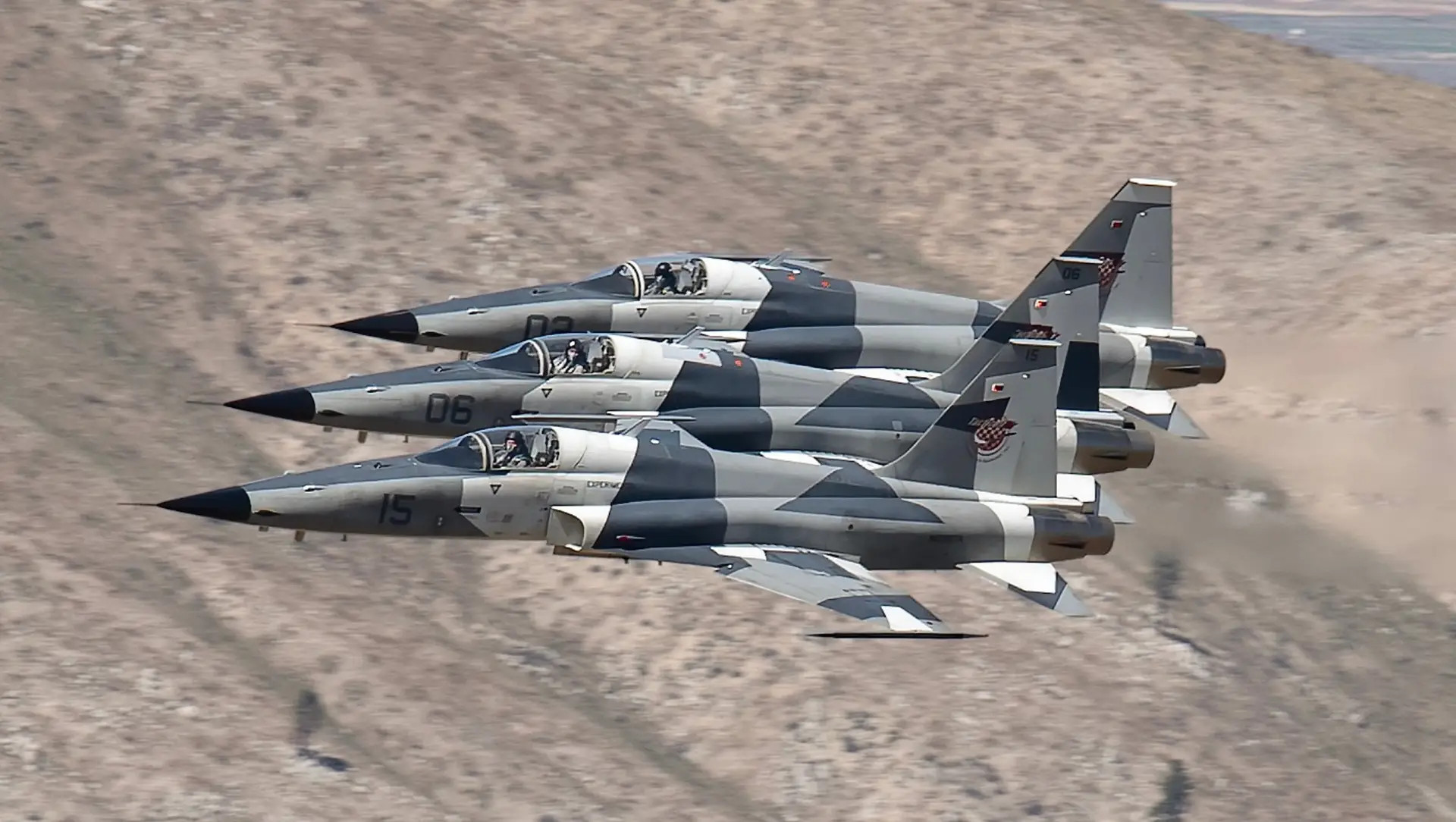
IRST systems, which are experiencing a renaissance in the U.S. military, offer an alternative to radars for spotting and tracking aerial threats. They are particularly useful for picking up stealthy targets with low radar cross-sections based on their thermal signatures instead. IRSTs, which can also be used cooperatively with radars, have the added benefit of being passive sensors that don’t emit signals that could alert enemies and are immune to radio frequency electronic warfare jamming.
Increasingly small form factor active electronically scanned array (AESA) radars, which offer greater range, fidelity, and precision over mechanically scanned types, could be another option for further expanding the capabilities of the Navy/Marine F-5 aggressor force. The Marine Corps’ 2022 Aviation Plan also mentioned interest in adding additional electronic warfare capabilities to these jets on top of the suites they already have built-in and pods they can currently carry.
Stealthy aircraft, crewed and uncrewed, as well as missiles, along with platforms with IRST sensors, ever-more capable radars, and more powerful electronic warfare suites, are all threats U.S. aviators can expect to face in future conflicts, especially higher-end ones against near-peer opponents like China and Russia. This only increases the demand to replicate those threats as realistically as possible in training.
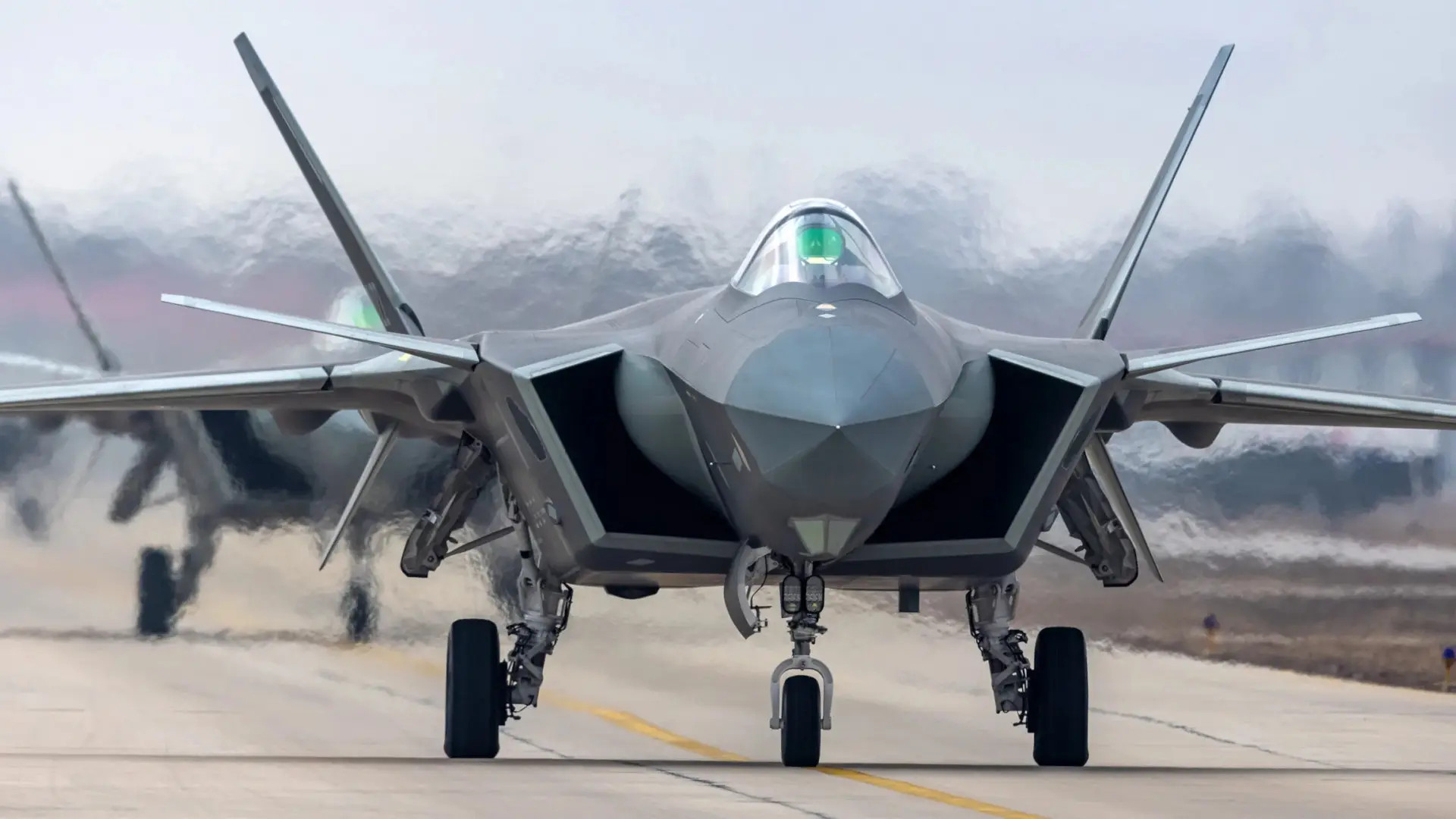
As of 2022, the Navy’s stated plan was to continue flying F-5s in the aggressor role at least until 2035. It is unclear if this schedule also applies to the Marines. Originally developed by Northrop, the Tiger II first flew in 1972.
For the Navy, F-16A-D Vipers, including ones acquired second-hand from the U.S. Air Force, and which are true fourth-generation platforms, are playing an increasingly larger role in providing aggressor support. The service also operates F/A-18E/F Super Hornets in the dedicated aggressor role.
No matter what, the arrival of the first of the 22 ex-Swiss Tiger IIs at Cecil Field puts the services one step closer to bolstering those fleets and improving their capabilities in the meantime. These jets look set to be an important part of training aviators for those services for years to come.
Contact the author: joe@twz.com
